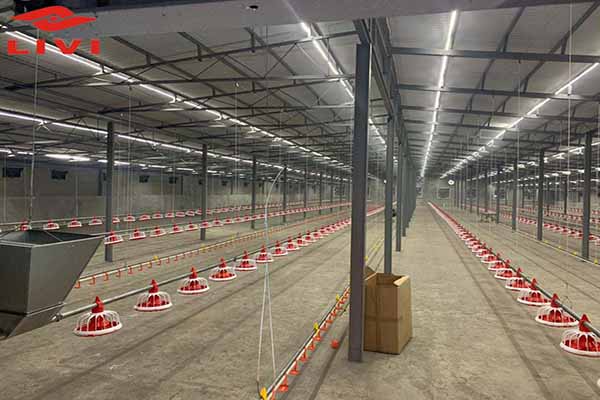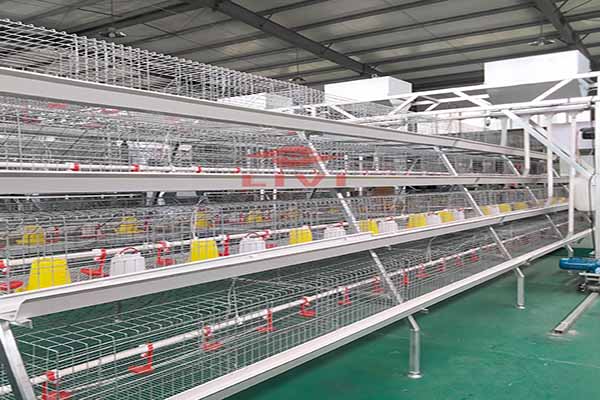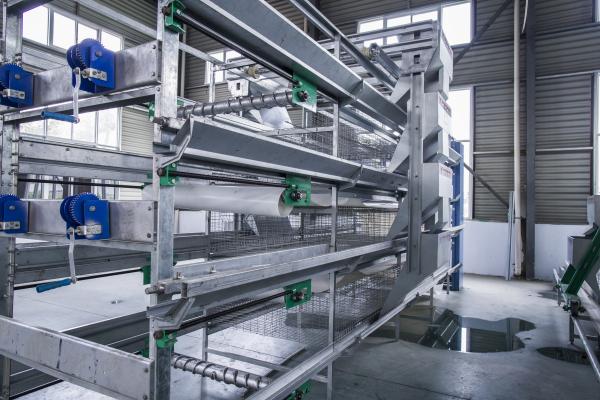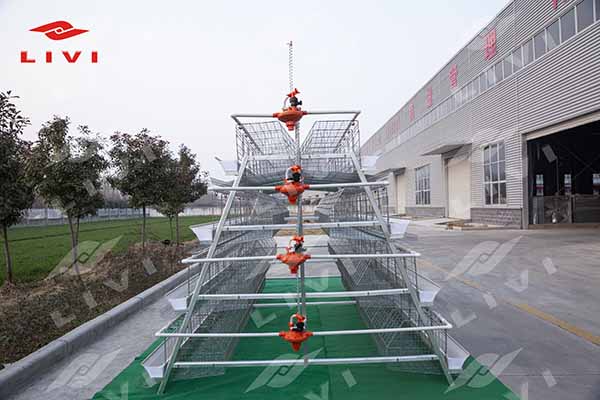Explore an innovative Layer Poultry Farm Design Plan in Ghana from LIVI Machinery. Discover a complete chicken farming design solution that integrates H/A type layer battery cages, automation, environmental control and turnkey services to maximize productivity and ROI.
Introduction — Rethinking Poultry Design for Practical Profitability
Agriculture is evolving into engineering. For Ghanaian poultry entrepreneurs aiming to scale, a practical design is no longer optional — it is the backbone of profitability. A robust Layer Poultry Farm Design Plan in Ghana must combine climate-aware architecture, durable materials, automation-ready cage systems, and a realistic cost-recovery strategy. LIVI Machinery delivers a complete chicken farming design solution that unites these elements into a turnkey package: design, manufacture, logistics, installation and after-sales support.
This article explores an alternative perspective on farm design — one that treats a poultry project as a systems engineering challenge rather than a set of disconnected purchases. We highlight technical choices, modular scalability, lifecycle economics, and operational workflows with the aim to help serious buyers make informed decisions.
Design Principles — What a Modern Layer Farm Must Solve
A meaningful design plan solves five core problems simultaneously:
- Thermal comfort: maintaining stable house temperature and humidity in Ghana’s tropical climate.
- Air quality and ventilation: removing ammonia and keeping dust low to reduce disease risk.
- Feed efficiency: minimizing waste and ensuring uniform delivery to all birds.
- Labor efficiency: automating repetitive tasks to reduce headcount and variability.
- Scalability: enabling expansion without costly rebuilding.
LIVI’s Layer Poultry Farm Design Plan in Ghana addresses all five by integrating an optimized cage layout, environmental control systems, automated feed and water lines, and a manure-handling strategy designed for local waste reuse or safe disposal.
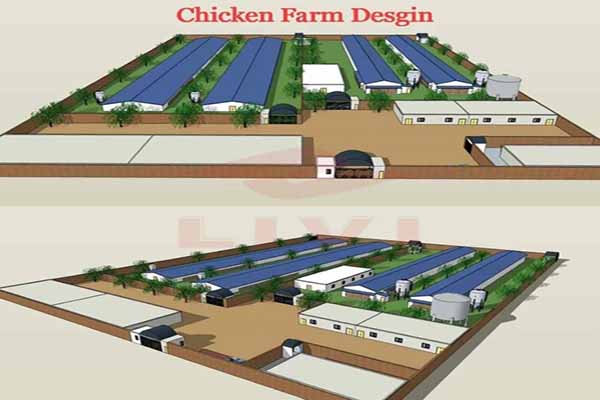
Layer Farm design plan
System Architecture — Cage Choice and Integration
H Type vs A Type: Choosing the Right Cage for Ghana
Cage type selection impacts footprint, capital cost, and automation compatibility.
- A Type (3–4 tiers): lower initial investment, easier manual maintenance, suited for mid-scale farms (5,000–30,000 layers).
- H Type (4–8 tiers): higher density, superior space utilization, ideal for large farms (30,000–200,000 layers) and full automation.
LIVI recommends H Type where land cost is a premium or when planners aim for automation from the outset. Both systems are fabricated with hot-dip galvanization and designed to accept automatic feeding, nipple drinkers, manure belts and egg conveyors.
Integration Layers (how components fit together)
- Structural layer: steel-framed house, roof insulation, concrete floor with engineered slope.
- Cage layer: modular H/A type rows aligned with service aisles.
- Automation layer: feed conveyors, pan feeders, nipple lines, egg conveyors.
- Environmental layer: tunnel ventilation, cooling pads, temperature sensors and controllers.
- Operations layer: control cabinet, data logging, remote alerts and user training.
This layered approach is the core of a complete chicken farming design solution and streamlines installation and maintenance.
Performance Modeling — Expected KPIs After Implementation
A credible farm design plan includes modeled KPIs to validate investment. Below is a sample KPI set for a 30,000-layer H Type scenario with LIVI automation in Ghanaian conditions.
| KPI | Baseline (Traditional) | LIVI Automated Target |
|---|---|---|
| Hen-day egg production | 70% | 92–96% |
| Feed conversion (kg feed / kg egg) | 2.4 | 1.7–1.9 |
| Labor per 10k layers | 6–8 workers | 1–2 technicians |
| Mortality rate (grow-out) | 4–6% | <2% |
| Payback period | 3–4 years | 12–18 months |
These projections are conservative and based on field data from multiple LIVI installations across tropical climates.
Lifecycle Economics — Total Cost of Ownership (TCO) View
Investors should evaluate TCO, not only upfront cost. TCO includes capital expenditure (CAPEX), operating expenses (OPEX), downtime risk and residual value.
Key TCO drivers:
- Material durability (hot-dip galvanization reduces replacement cycles)
- Automation level (higher initial CAPEX, lower ongoing labor/OPEX)
- Energy consumption (efficient fans & controllers reduce electrical costs)
- Biosecurity performance (lower disease losses, lower vet costs)
LIVI’s design optimizes TCO by selecting components that pay back through improved FCR, labor reduction, and higher lay rates.

Turnkey Service — From Concept to Commercial Operation
A design plan is only as good as its execution. LIVI offers a full-service model:
- Free preliminary farm design based on land size and target capacity.
- Engineering drawings and 3D layouts for local permits and contractor bids.
- Factory manufacturing with QC and pre-shipment testing.
- Logistics management including container packing and customs document support.
- On-site supervision and training until farm hits steady-state production.
- Remote monitoring and spare parts supply for sustained uptime.
This one-stop model is the operational heart of a complete chicken farming design solution for Ghanaian clients who want minimal project friction.
Operational Considerations — Management and Training
Automation shifts the skillset of the workforce. LIVI’s projects include structured training modules:
- Daily control routines and alarm response
- Preventive maintenance schedules for feed lines and manure belts
- Biosecurity checkpoints and vaccination record-keeping
- Data interpretation for feed curves, laying performance, and mortality trends
Empowered operators can interpret performance metrics and tune systems, ensuring the farm sustains optimal returns.
Comparative Table — Automation vs Traditional Systems (30,000 Layers)
| Area | Traditional Deep Litter | LIVI H Type Automated System |
|---|---|---|
| Initial CAPEX | Lower | Higher |
| Ongoing Labor | High | Low |
| Feed Waste | High | Low |
| Egg Collection | Manual | Automated conveyor |
| Cleanliness & Hygiene | Variable | Consistently high |
| Expansion | Structural rebuild needed | Modular add-on |
The right choice depends on strategy: quick low-cost setup versus a capitalized, scalable, and higher-margin operation. LIVI’s design approach quantifies these trade-offs for each client.
Case Snapshot — Representative Results from Regional Projects
LIVI’s installations across tropical regions provide a rich dataset. Representative outcomes (averaged across multiple farms with H Type systems):
- Egg production uplift: +18–30%
- Labor reduction: 60–80%
- Feed conversion improvement: 10–25%
- Payback: 12–24 months depending on local egg prices and labor costs
These results support Ghanaian investors who target medium- to long-term profitability and stable supply chain positioning.

FAQs — Practical Buyer Questions
Q1: What information does LIVI need to produce a Layer Poultry Farm Design Plan in Ghana?
A1: Land dimensions, elevation, local climate data, target bird capacity, and budget constraints. With these inputs LIVI delivers a free initial layout and cost estimate.
Q2: Can the design be phased to reduce upfront cost?
A2: Yes. LIVI supports phased deployments where cage lines, automation and environmental control are added in stages to match cash flow.
Q3: How energy intensive is an automated system?
A3: Energy consumption depends mainly on ventilation and feed handling. Proper design with efficient fans and controllers keeps electrical costs manageable; solar hybrid options are available.
Q4: What after-sales support is provided?
A4: LIVI offers spare parts supply, remote troubleshooting, periodic performance audits, and optional on-site technician dispatch.
Q5: Are the cages compatible with local breeds and stocking densities?
A5: Yes. Cage dimensions and stocking density are customized to match local strains, welfare guidelines, and regulatory limits.
Next Steps — How to Engage LIVI for a Custom Plan
If you are evaluating a Layer Poultry Farm Design Plan in Ghana, consider these practical next steps:
- Share your land measurements and target capacity with LIVI.
- Request an initial 3D layout and basic budget estimate.
- Compare lifecycle economics and choose a phased or full automation plan.
- Confirm logistics and local contractor support for civil works.
- Schedule production and an installation window with LIVI’s project team.
Conclusion — Systems Thinking Wins in Poultry Farming
A professional Layer Poultry Farm Design Plan in Ghana is an investment in engineering, biology and operations. LIVI Machinery offers a complete chicken farming design solution that reduces uncertainty and accelerates return on investment. By treating farms as integrated systems — not discrete products — LIVI helps farmers move from seasonal vulnerability to predictable commercial outcomes.
Contact LIVI Machinery today to request a free design consultation and a tailored proposal for your Ghana project. Email: [email protected] | WhatsApp: +86 173 4489 8347 | Website: www.livicages.com






